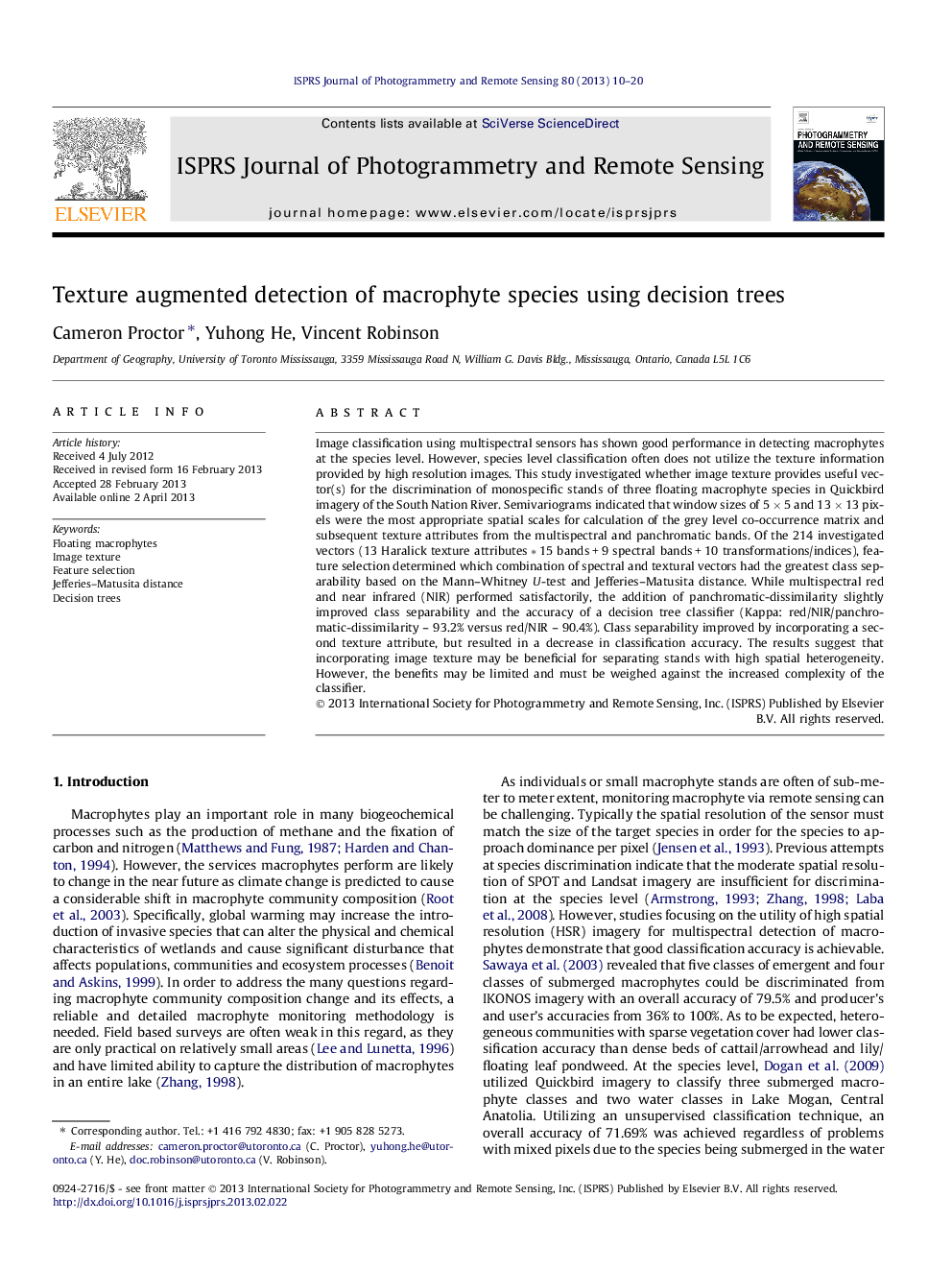| Article ID | Journal | Published Year | Pages | File Type |
|---|---|---|---|---|
| 556068 | ISPRS Journal of Photogrammetry and Remote Sensing | 2013 | 11 Pages |
Image classification using multispectral sensors has shown good performance in detecting macrophytes at the species level. However, species level classification often does not utilize the texture information provided by high resolution images. This study investigated whether image texture provides useful vector(s) for the discrimination of monospecific stands of three floating macrophyte species in Quickbird imagery of the South Nation River. Semivariograms indicated that window sizes of 5 × 5 and 13 × 13 pixels were the most appropriate spatial scales for calculation of the grey level co-occurrence matrix and subsequent texture attributes from the multispectral and panchromatic bands. Of the 214 investigated vectors (13 Haralick texture attributes * 15 bands + 9 spectral bands + 10 transformations/indices), feature selection determined which combination of spectral and textural vectors had the greatest class separability based on the Mann–Whitney U-test and Jefferies–Matusita distance. While multispectral red and near infrared (NIR) performed satisfactorily, the addition of panchromatic-dissimilarity slightly improved class separability and the accuracy of a decision tree classifier (Kappa: red/NIR/panchromatic-dissimilarity – 93.2% versus red/NIR – 90.4%). Class separability improved by incorporating a second texture attribute, but resulted in a decrease in classification accuracy. The results suggest that incorporating image texture may be beneficial for separating stands with high spatial heterogeneity. However, the benefits may be limited and must be weighed against the increased complexity of the classifier.
